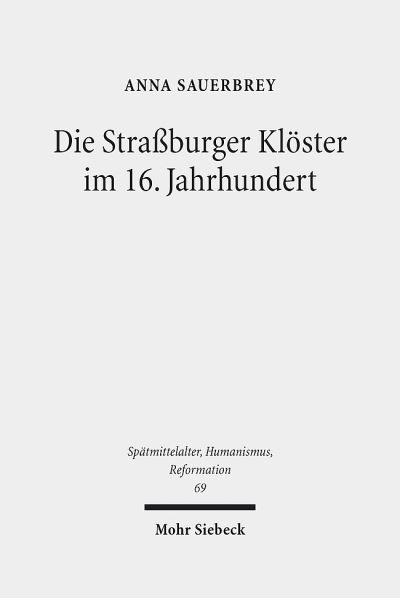
English summary: As in many other imperial cities in 16th century Germany, Strasbourg introduced the Reformation early on. In the course of the introduction of Protestant theology, the magistrate sought to close the many monasteries in town, which Martin Luther as well as Strasbourg's most important Protestant thinker, Martin Bucer, had ruled not compliant with the new doctrine. However, a small number of monasteries survived, some well into the 17th century. The author compares dissolved and surviving convents, seeking an answer to the question of which factors enabled a community to sustain Catholic life in a Protestant environment. She focuses particularly on the role gender played and analyzes the differences between male and female communities, their different positions in 16th century society and their different restrictions and opportunities.
German description: In der Reichsstadt Strassburg setzte sich in den zwanziger Jahren des 16. Jahrhunderts der Protestantismus durch. Bald begann der Stadtrat, sich um die Schliessung der Kloster zu bemuhen, deren Existenz nicht mit der neuen Lehre vereinbar war. Dennoch uberlebte eine Anzahl von Klostern teilweise bis in das 17. Jahrhundert hinein. Was unterschied die uberlebenden Konvente von den aufgelosten? Mit welchen Strategien setzten sich die Monche und Nonnen gegen die Schliessungen zur Wehr? Welches Interesse hatte der Stadtrat an ihrem Uberleben? Diesen Fragen geht Anna Sauerbrey nach und vergleicht dabei systematisch die unterschiedlichen Voraussetzungen und Handlungsmoglichkeiten von Manner- und Frauengemeinschaften.
| ISBN: | 9783161516917 |
| Publication date: | 23rd October 2012 |
| Author: | Charlotte Köckert |
| Publisher: | Mohr Siebeck |
| Format: | Hardback |
| Pagination: | 435 pages |
| Series: | Spatmittelalter, Humanismus, Reformation / Studies in the Late Middle Ages, Humanism and the Reformation |
| Genres: |
History of religion Christianity |